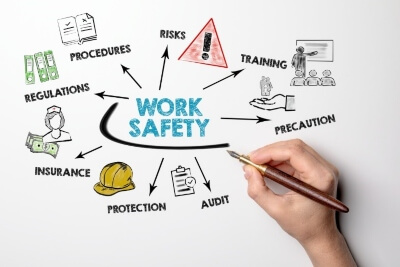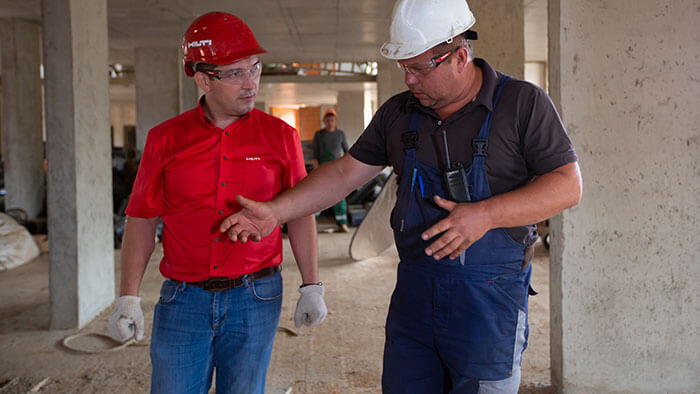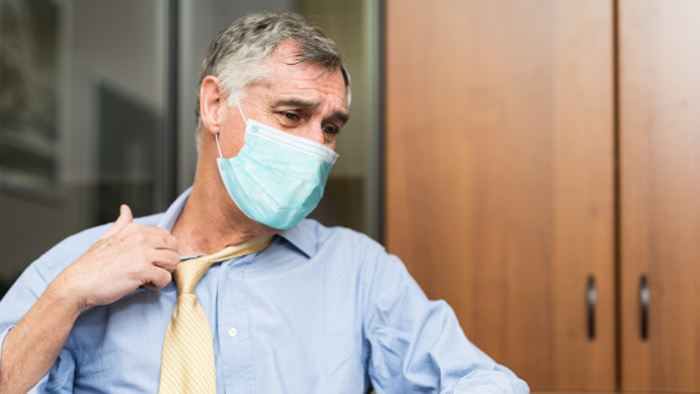Ontario Employers Need Not be Afraid of the IRS!
Apr 25, 2019 JHSC, Occupational Health & Safety RegulationsWhen employers and supervisors hear the term “IRS” they do not always recognize it within the Canadian context… we have Revenue Canada for that! For us in Ontario, it is the short form for the Internal Responsibility System. This system is present in every Ontario workplace whether you recognize it or not.

What’s this Internal Responsibility System?
For those that do not know, the Internal Responsibility System is the underlying principle behind the Occupational Health and Safety Act. It was the result the Ham (Royal) Commission, which was purposed to solve issues regarding safety following a mining disaster. Headed by Dr. James Ham, who as an electrical engineering professor, he devised a system to maintain a safe workplace. To function, the system relies on defined roles in the Occupational Health and Safety Act, the employer, the supervisor, the worker, and the JHSC as an internal audit tool.
Employer Responsibility
The employer holds the most responsibility under the act as they control the workplace. Their duties include to “provide information, instruction and supervision to a worker to protect the health or safety of the worker” (OHSA S.25 (2) (a)). This translates to providing a worker with adequate training and information they need to keep themselves safe, and a supervisor to ensure it is being followed. Employers also are required to “acquaint a worker or a person in authority over a worker with any hazard in the work and in the handling, storage, use, disposal and transport of any article, device, equipment or a biological, chemical or physical agent” (OHSA S.25 (2) (d)). Which means you have to inform workers or their supervisors about anything that can hurt them. Now the latter appears to be common sense, but that’s a topic for another post. Finally the employer must “take every precaution reasonable in the circumstances for the protection of a worker” (OHSA S.25 (2) (h)). That wonderfully ambiguous clause is what seems to cause all the bother. It has no clear definition! When you read through the Court Bulletins it becomes apparent that employers have to ask themselves, “is there one thing we could have done differently to protect that worker?” – If the answer is “Yes”, then you are guilty.
Supervisor Responsibility
The supervisor’s roles as defined by the Occupational Health and Safety Act are solely to look after worker safety. A supervisor has to ensure a worker “works in the manner and with the protective devices, measures and procedures required by this Act and the regulations” (OHSA S.27 (1) (a)). Which is to say that a supervisor must make sure a worker is following the law – not an easy task when a lot of supervisors do not really know what it says. Next is to guarantee workers “uses or wears the equipment, protective devices or clothing that the worker’s employer requires to be used or worn” (OHSA S.27 (1) (b)). So they have the verify all PPE required by employer policy is being used, and used correctly – all of the time. OHSA S.27 (2) (a) states that a supervisor has to inform workers about every hazard in the workplace that they know about. Lastly a supervisor must “take every precaution reasonable in the circumstances for the protection of a worker” (OHSA S.27 (2) (c)). That same impossible standard the employer must meet is also on the shoulders of the appointed supervisors.
The above mentioned duties and responsibilities are specific to those roles in the workplace. A worker’s duties apply to everyone. As an example, a supervisor yes, follows section 27 of the Occupational Health and Safety Act, but also is a worker – and must follow section 28 as well.
Worker Responsibility
A worker as per the Occupational Health and Safety Act must follow the law (OHSA S.28 (1) (a)). Hard to do when they have not read it. However how many of us have read the Highway Traffic Act? Not many, yet we still are allowed to drive. We were however trained either formally or informally on vehicle operation and the rules of the road. Workers are no different – they are trained by their employers in regards to health and safety. A worker must wear their PPE as per company rules (OHSA S.28 (1) (b)). Other duties include reporting hazards, defective equipment, and when they see laws being broken (OHSA S.28 (1) (c) (d)). The act governs what a worker must do to ensure that their workplace is a safe one! It also states what a worker is prohibited from doing. A worker cannot “use or operate any equipment, machine, device or thing or work in a manner that may endanger himself, herself or any other worker” (OHSA S.28 (2) (b)). So participating in activities that can lead to injury are an offense. This was recently charged for forklift operators using cellphones on/near their equipment. Lastly a worker cannot “engage in any prank, contest, feat of strength, unnecessary running or rough and boisterous conduct” (OHSA S.28 (2) (c)). I have often heard people refer to this as the “no fun clause”, I disagree. What it means is that workers are not allowed to create their own activities in the workplace. As we have already mentioned an employer must maintain control over hazards in the workplace – unpredictable actions such as pranks make this task impossible. As well, I have never witnessed a job hazard analysis done on a prank.
Joint Health and Safety Committee
The Joint Health and Safety Committee is mandated in all workplaces with over 20 people regularly employed. Certain circumstances such as the presence of a designated substance would require a committee with less, but 20 people is the general rule. A committee is where both management and workers meet to discuss safety concerns from both perspectives. Each role has at least one person who is a certified member (specially trained in by the Occupational Health and Safety Act and hazard recognition) to hold the organization as a whole accountable to the principles of the Internal Responsibility System.
Now that we have covered the elements of Internal Responsibility System you should see how workplace safety is not just one person’s job – but everyone’s. If one element of the system breaks down, incidents are far more likely. If the worker does not report, then how can the supervisor or employer fix it? If supervisors allow workers to not wear their PPE then how will they be protected? If employers do not inform workers of hazardous physical agents, then how will they know to protect themselves? Workplace safety truly is a team effort, and to have a sustainable safety culture at your workplace – understanding and abiding by the Internal Responsibility System is crucial.
Geoff Rowatt | CHRP | Safety Trainer





